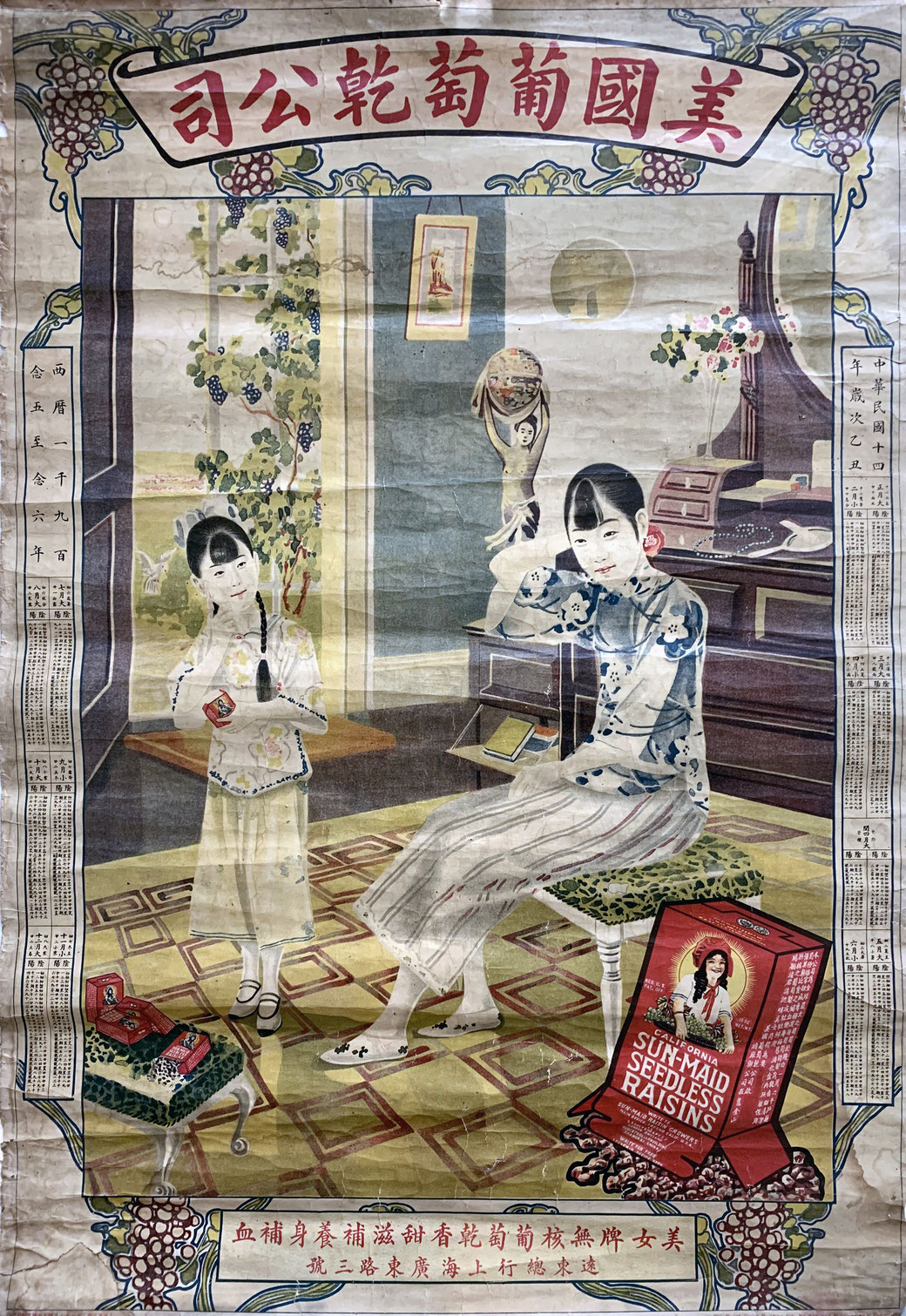
With community support, the California Associated Raisin Company was established in 1912 and membership comprised 85 percent of the state’s raisin growers. In 1915, the brand name Sun-Maid, coined by advertising executive E.A. Berg, was launched.
Sun-Maid began developing raisin markets in Asia in 1918, and by 1922 had set up offices in Japan and China, where it immediately became a hugely popular brand. While raisins were considered to be commonly available foodstuffs by Americans, they were viewed as luxury goods in China at the time
The man tasked with introducing raisins and the Sun-Maid brand in particular to Chinese mainstream consumers was famous American advertising agency owner Carl Crow. In his seminal 1937 book “Four hundred million customers” he boasts about how Sun-Maid (and with that he) single-handedly transformed raisins from merchandising goods into products for mass consumption, thereby popularizing raisins in China:
“We did go far towards making the Chinese a nation of raisin eaters. Fifteen years ago raisins were practically unknown in China, but now the little red box which forms the packet of the world’s most famous raisin is a familiar sight on the shop shelves of almost every city. (…) When we promoted the sale of raisins, we were not introducing any new food product to the Chinese. Arabian traders brought raisins to China about the time of Christ, and later, grapes were grown and dried in North China. These Chinese raisins were not produced in any quantity and did not become a household article until the California raisin played a part.”

To Crows credit the Sun-Maid Company Far East Division did indeed report that exports to China more than doubled in a single year in the mid-1920s: from 108,165 tons in the first eight months of 1923 to 222,588 tons in the first eight months of 1924.
Our calendar poster falls right in this period of the roaring 1920s and exemplifies several important learnings of early Western brand advertising tactics in the Chinese market:
In the header the California Associated Raisins Company is simply translated as 美國葡萄乾公司 - American Raisin Company. The footer however reveals the brand name of Sun-Maid raisins as “Beautiful girl brand” or “meinv pai” (美女牌) in Chinese. More importantly the advertising slogan shows the health-appeal angle Carl Crow chose to introduce raisins to a wider target audience: “The beautiful girl brand sweet and fragrant seedless raisins nourish the body and enrich the blood” 美女牌無核葡萄乾香甜滋補養身補血.
Chinese were particularly concerned with their children’s blood as an indicator of physical health and it is thus no surprise that the posters key visual shows a modern upper class Shanghai home scene with a little girl consuming the delicious dried grapes high in iron. Another important learning, that may seem obvious today, is that the illustration shows the package opened and the raisins spilling out, to help Chinese consumers identify the product and the package’s contents.
When Sun-Maid Raisins were first advertised in the Orient, copy was used showing the sealed package as in American advertising. After some months though, it was learned that many consumers thought Sun-Maid was a new brand of cigarettes.
It should not be forgotten that the literacy rate in 1920s China was only about 15%, and so the poster not only shows the dried content of the package but also the natural source of grape vines growing outside the window and used as design element in the outlines of the poster.
One hundred years later, China’s literacy rate is around 98% but unsurprisingly little has changed in advertising and Sun-Maids Tmall e-commerce flagship store continues to show a key visual featuring the same elements. Only the brand name has been modernized to 阳光少女 (“yangguang shaonv”) and is now a more accurate representation of the English term, translating to “Sunshine Maid”.

Parts of this summary were taken from Cecile Armands excellent in-depth analysis of Sun-Maids advertising tactics in Republic China: https://www.usfca.edu/center-asia-pacific/perspectives/v13n2/armand














Write a comment